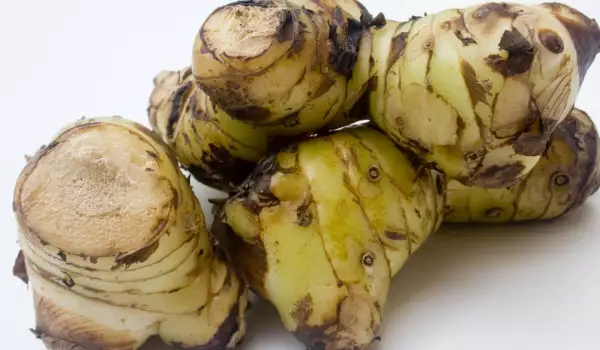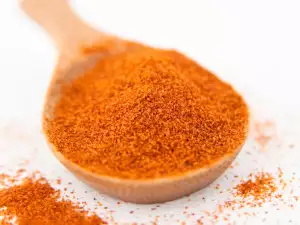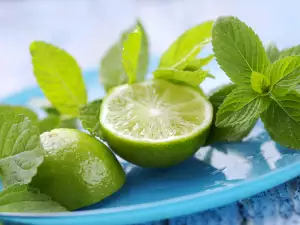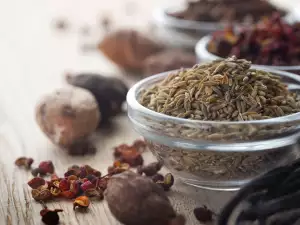Galanga /Alpinia Galanga/ is a very popular spice in the whole of Southeast Asia. It is very typical of many of your favorite Thai cuisine. Homeland of galanga is the island Haynana in China. Grown in Thailand, South China and Java - Indonesia.
It is widely used in India, Malaysia, Indonesia, Cambodia and Vietnam. Enters into the composition of the Chinese mix five Spice powder. Galanga is botanically similar to ginger, but can not be considered as a substitute in cooking.
However galanga, much like its relative - has high bamboo- like stems that bear alternately arranged elongated leaves. Both plants have very strong fleshy rhizomes, which are the reason for the high noise and worldwide popularity of these two species.
History of galanga
The name of galanga originates from the Chinese Liang-tiang and Arab Khalanjan. Latin name of galanga is given in honor of Prospero Alpini - Italian botanist who first described and categorized it.

In Europe, people were acquainted with it thanks to the Romans, who get it from Arab traders. The root of galanga is appreciated not less than that of ginger. In the Middle Ages it was popular as a remedy. A decoction of galanga is used to excite the appetite, strengthen the stomach and fight against colic.
Selecting and storing galanga
Unfortunately, if you're not planning travel to any of these destinations, it can be purchased dried or as fresh roots. Since recently, in some of the largest food chains, they are selling jars of galanga paste, which many can be successfully used to add aroma and taste to exotic dishes.
However, if you find fresh roots galanga, you have to peel the outer skin and cut them into rectangular pieces no longer than 8 cm and then dry them in the sun. When well dried, they acquire a brownish color outside, and the inside - orange-red.
Galanga in cooking

Galanga is an integral part of the Thai, Indonesian and Vietnamese cuisine. His fresh rhizomes are very strong and have a fresh flavor that is reminiscent of a mixture of lemon peel, camphor and pine resin. It has a pleasant bitter taste, which in any case is not intrusive.
In Thai cuisine, its use can be reduced to three basic ways - finely chopped roots fried in fat /often with garlic/ early in the preparation of the dish, chopped galanga roots are one of the main ingredients of curry pastes, thin slices of the roots give incredible taste to spicy and sour soup with shrimp or chicken soup with coconut milk.
The flavor of galanga is used as intensively in Indonesian cuisine. Powdered dried roots are used to flavor the traditional sweet soy sauce - Mannis.
Like ginger, galanga combines well with garlic, cinnamon, turmeric and coconut milk. Dried and ground galanga is much more pungent than fresh roots and most closely to ginger.

Benefits of galanga
Galanga has very good anti-inflammatory properties, the consumption is very helpful for arthritis. It helps to relieve the discomfort caused due to inflammation of the stomach and ulcers. Galanga contains a high amount of antioxidants, which help to minimize the damage caused by free radicals and other toxins in the body.
To improve blood circulation processes in the body, include galanga in your menu. Several slices of galanga soothe upset stomachs. It calms nausea and symptoms of seasickness. Consumption of galanga prevent influenza illness, relieves sore throat, coughs and bronchitis. It is used to improve the performance of bile and liver.
Dangers of Galanga
You should not overdo it with the consumption of this root, because high doses of the essential oil in it can cause hallucinations. Pregnant and lactating women should avoid use.









Comments